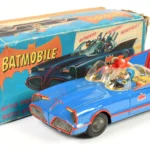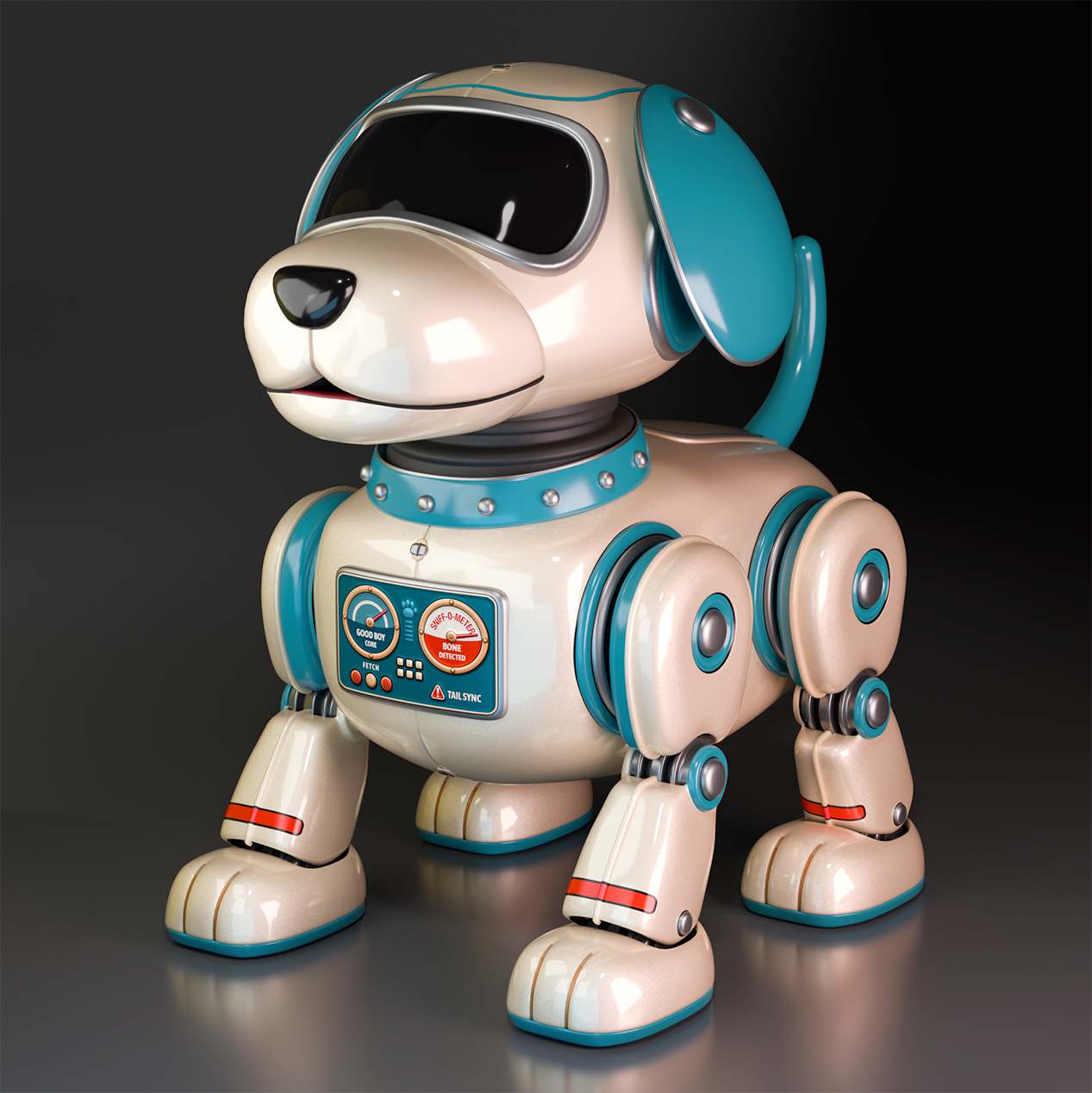
Lambda Infinity (Blender)
October 8, 2025
Washington Toy Show
October 20, 2025
Tin Aibo (Blender)
This is the third entry in my next series of tin robot illustrations. As I mentioned in my previous posts, I’m interested in branching out to expand the universe of Japanese tin toys with some more imagined creations. One of the new categories I came up with is “everyday objects,” conceived from the perspective of “what if tin toy production never faded away, and tin continued to be a popular toy medium beyond its relatively short-lived reign? What would some contemporary products look like if they were originally produced in tin?” I’m specifically more interested in riffing on anthropomorphic objects like animals and humanoid figures, but I may branch out as I noodle on future concepts.
Left to right: I strived for simple but “believable” construction; detail of the front chest plate lithography; the design was initially inspired by later gen Aibos.
Aesthetically, I prefer Sony’s later generation Aibos like their ERS-7 and ERS-1000 models, which had more rounded features and perhaps appear less “robotic” (I know, ironic), so I based the body style more on those. I also felt it was important to convey a degree of believability to the construction, like obviously visible mechanical joints in the legs, since Aibos are known for their sophisticated movement. At the same time, I didn’t want to stray too far from the mid-century vibe I’m trying to capture in these new designs, so I doubled down on features like old-school lithography, tin embossing (in the form of bump mapping), clasp joined seams and retro colorways.
Finally (and just for fun), I even made up a bit of fake revisionist lore while I was putting it together!:
In 1962, Sony looked at Japan’s booming tin toy export market. Companies like Horikawa and Nomura were enjoying success with mechanical spacemen, tanks, and walking robots. Thus began their ambitious attempt to build the world’s first robot in the form of man’s best friend. Unfortunately, the emotional fidelity they aimed for required components far beyond what tinplate manufacturing could reliably reproduce at the time. A few fully hand-assembled prototypes were made for internal demos, but the project was quietly shuttered before production.